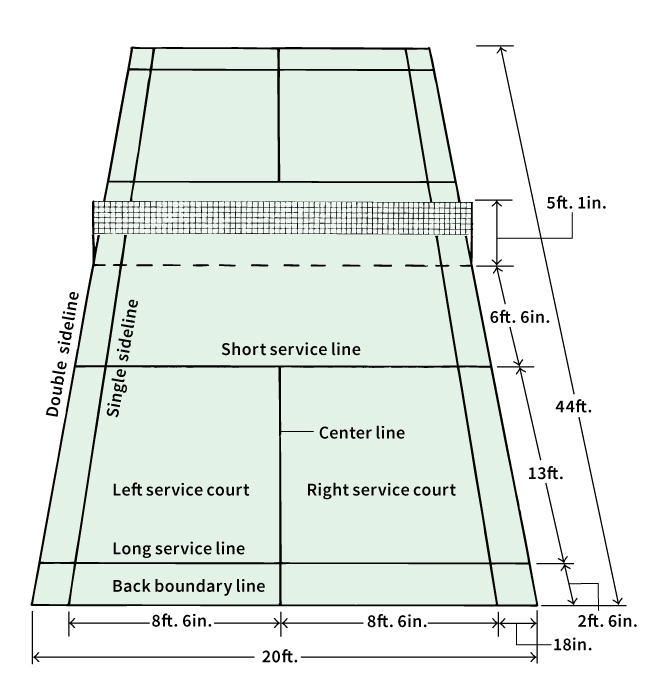Badminton is a game in which opposing players use rackets to hit a shuttle, also called a shuttlecock, back and forth over a net. British officials in India learned the game, known as poona, and took it to England. It was played at Badminton, Gloucestershire, country home of the Duke of Beaufort, in 1873. From there, the game took its English name. Beginning in 1992, badminton became a medal sport in the Summer Olympic Games.
The Badminton Association of England (now also called Badminton England) established the first standard set of rules for the game in 1895. The Canadian Badminton Association (now called Badminton Canada) was founded in 1921. The American Badminton Association (now USA Badminton) was founded in 1936. The International Badminton Federation (now the Badminton World Federation) was founded in 1934. A number of countries compete every two years for the Thomas Cup for men and the Uber Cup for women.
Playing
consists of volleying (hitting) the shuttle back and forth over the net without allowing it to hit the playing surface. The shuttle is made of feathers or nylon in a cork base. It flies slowly when hit gently. But when hit hard and timed perfectly, it may travel more than 200 miles (320 kilometers) per hour. However, the shuttle decelerates quickly after a short distance.

The badminton racket cannot exceed 263/4 inches (67.9 centimeters) in length and 9 inches (22.9 centimeters) in width. The badminton net is 5 feet (152 centimeters) high at the center and 5 feet 1 inch (155 centimeters) high at the posts. Two people play singles and four—two on each side—play doubles. A mixed doubles team consists of one man and one woman.
The shuttle is served with an underhand motion into the opponent’s service court, diagonally opposite. The server must hit the shuttle while it is below his or her waist. The racket head must also be below the serving hand. Only one attempt on the serve is allowed. If the server fails, then the opponent serves.
The four common strokes in badminton are known as clear, also called lob; drop; drive; and smash. In the clear, the shuttle soars in a high arc and falls into the court behind the opponent. In the drop, the shuttle falls gently and just clears the net. The drive is a hard stroke hit on a straight line. The smash is a hard stroke hit sharply downward. All four can be forehand or backhand strokes. Much deception is possible in placing shots and in controlling the shuttle, which often will stop short in its flight and plunge down to the court.
Scoring.
A player or team scores a point in either of two ways: (1) when the opponent lets the shuttle drop to the court or (2) by a fault. A fault occurs when the opponent serves incorrectly, touches the net or shuttle, hits the shuttle into or under the net or out of the playing area, hits the shuttle twice in succession, or catches and holds the shuttle on the racket and then slings the shuttle during a stroke.
A game is won by the first side to score 21 points. However, if the score becomes 20-20, the side that first gains a 2-point lead wins. If the score becomes 29-29, the side that scores the 30th point wins. The first side to win two games wins the match.
